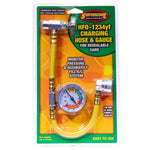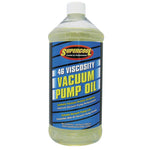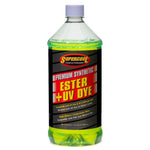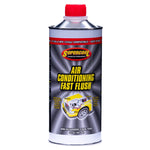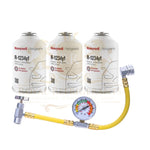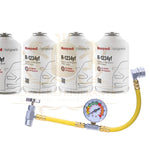You have no items in your shopping cart.
Everything You Need to Know About How to Get a License to Buy Refrigerant for HVAC and Automotive Applications
If you work with air conditioning or refrigeration systems, you’ve probably heard that you need a license or certification to legally purchase and handle refrigerants like R410A, R134A, R22, or R1234yf. This requirement exists to ensure safety and to prevent environmental harm caused by refrigerant leaks or improper disposal.
In this blog, we’ll explain how to get a license to buy refrigerant for HVAC and Automotive Applications why a license is required, how to get one, what types of certifications exist, and what you can and cannot do without one.

Why Do You Need a License to Buy Refrigerant?
Refrigerants contain chemicals that can damage the ozone layer or contribute to global warming if released into the atmosphere. Because of this, most countries — including the U.S., Canada, U.K., and many others — regulate the sale and handling of refrigerants.
Licensing ensures that:
- Technicians know how to safely recover, recycle, and charge refrigerants.
- Only certified individuals can buy and use restricted refrigerants.
- Environmental laws (like the EPA Section 608 in the U.S.) are followed.
Types of Refrigerant Licenses (Example: U.S. EPA Certifications)
In the United States, the Environmental Protection Agency (EPA) requires HVAC technicians to hold specific certifications under Section 608 or Section 609 of the Clean Air Act.
🔹 EPA Section 608 Certification (Stationary HVAC Systems)
This certification is for anyone who services or disposes of stationary air conditioning and refrigeration equipment.
There are four types:
- Type I – For small appliances (like domestic refrigerators and freezers).
- Type II – For high-pressure systems (like split systems using R410A or R22).
- Type III – For low-pressure chillers.
- Universal – Covers all types (I, II, and III).
You need at least Type II or Universal certification to buy or handle most HVAC refrigerants such as R410A, R407C, R22, etc.
🔹 EPA Section 609 Certification (Automotive A/C)
This certification is specifically for technicians working on mobile air conditioning systems, such as those using R134A or R1234yf.
- Required for anyone who services, repairs, or recharges vehicle A/C systems.
- Allows purchase of small containers of automotive refrigerants.
- Offered by organizations like MACS (Mobile Air Conditioning Society) and ASE (Automotive Service Excellence).
How to Get a Refrigerant License — Step-by-Step
The process is relatively simple but requires some study and testing.
Step 1: Choose the Type of License You Need
- For HVAC work → Get EPA Section 608 (Type II or Universal).
- For Automotive A/C → Get EPA Section 609.
Step 2: Enroll in a Certified Training Program
You can take the course:
- Online (through EPA-approved providers)
- At trade schools or community colleges
- Through HVAC unions or technical institutes
Training includes topics like:
- Refrigerant safety and recovery
- Leak detection and repair
- System evacuation and charging
- Environmental laws and compliance
Step 3: Take the Certification Exam
- Exams can be online or in-person.
- Section 608 exams are typically open-book for the core section but closed-book for Type II & III.
- You must pass both the Core and the Type-specific sections to earn certification.
Step 4: Receive Your Certification Card
After passing, you’ll receive a permanent EPA certification card, which never expires.
Keep a copy handy — refrigerant suppliers may ask to see it before selling restricted refrigerants.
What Happens If You Don’t Have a License?
Without proper certification:
- You cannot legally buy refrigerants like R410A, R22, or R134A in bulk.
- Suppliers may refuse sale or require proof of certification.
- You could face fines and penalties for violating refrigerant handling laws.
- Improper handling may lead to safety risks such as frostbite, explosion, or toxic exposure.
However, small pre-charged systems (like sealed A/C units or DIY recharge kits for cars) may be sold to the general public in some areas — but regulations vary by country.
How to Get Certified Outside the U.S.
If you’re outside the United States:
- Canada: Requires ODP (Ozone Depletion Prevention) certification through approved provincial programs.
- U.K. / EU: Requires F-Gas certification for refrigerant handling.
- Australia / Asia / Middle East: Similar licenses are required under local environmental agencies.
Always check your local environmental protection authority or HVAC trade body for region-specific certification details.
Where to Get Licensed or Buy Refrigerant
Here are some trusted training and certification organizations:
- EPA-approved Section 608 programs: ESCO Institute, Mainstream Engineering, HVAC Learning Solutions.
- Section 609 (Automotive): MACS, ASE, or SAE-certified online courses.
- For other regions: National HVAC associations or government-authorized technical boards.
Key Tips for Technicians and Shop Owners
✅ Keep copies of all technician licenses on file.
✅ Label all refrigerant cylinders clearly.
✅ Always use recovery machines and avoid venting refrigerant.
✅ Maintain EPA-compliant service records.
✅ Renew your safety training every few years to stay updated with new refrigerants like R32 and R1234yf.
Conclusion
Getting a license to buy refrigerant is not only a legal requirement but also a professional standard for anyone in the HVAC or automotive service industry. It ensures that refrigerants are handled safely, responsibly, and in compliance with environmental laws.
Whether you work on home air conditioners, commercial systems, or car A/C units, obtaining your EPA 608 or 609 certification is the first step toward becoming a qualified, trusted technician.
 English
English

